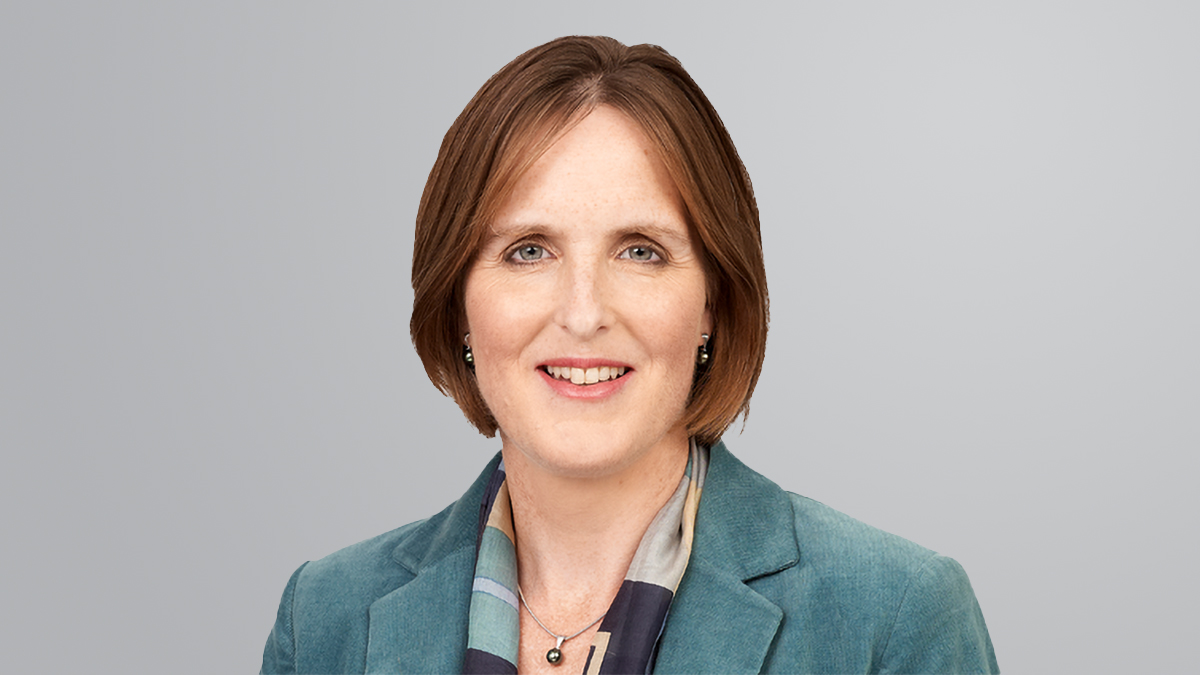Big Interview: Hiscox eyes first-mover advantage from Google Cloud collaboration
Specialty insurer and tech company’s partnership is 'mutually perfect timing', Hiscox London Market CEO says
Kate Markham, Hiscox London Market chief executive, outlines how Google Cloud’s generative artificial intelligence technology will enhance its risk assessment capability
Hiscox and Google Cloud’s collaboration in artificial intelligence (AI) could cut lead open-market quotes from three days to three minutes, according to the specialty insurer’s London Market chief executive, Kate Markham.
The collaboration combines Hiscox London Market’s recently built technology platform, Hiscox AI Laboratories (Hailo), with Google Cloud’s generative AI technology to automate lead algorithmic underwriting from submission to quote. The work leverages both Google Cloud’s BigQuery and Vertex AI platform to extract key data and insights from email submissions, a manual process that can typically take up to three days in today’s insurance operating model.
In an interview with Insurance Day, Markham says the proof of concept was undertaken in Hiscox’s sabotage and terrorism line of business, although the principles will apply to other lines of business “within and beyond big-ticket insurance”.
“What we’re working on at the moment is how to take the capabilities of the proof of concept and roll out the relevant ones as fast as we possibly can across multiple classes of business”
Kate Markham
Hiscox London Market
Hiscox chose that line of business because it involves a considerable amount of manual data extraction and analysis. Human insight is – and will always be – a crucial part of the specialist underwriting process, Markham stresses, but when expertise is paired with cutting-edge AI technology Hiscox will be able to serve its customers even more effectively and efficiently. “The power of our collaboration with Google is both teams have brought complementary skills to the table,” Markham says.
A demonstration video of the process Markham shared with Insurance Day, reveals the “algorithmic journey” for a Hiscox underwriter (see box). This combines Google Cloud’s large language modelling with the analysis and pricing of Hailo, Hiscox’s “homegrown” AI model.
How it works
An email arrives in the underwriter’s inbox that meets the company’s requirements for the renewal of a risk it wrote the previous year for terrorism and sabotage cover, along with all other relevant risk details included. The underwriter is also provided with a slip outlining the risks, terms and conditions and a schedule of values outlining all the locations to be insured and their respective values.
The underwriter uploads the email into the user interface, where it is unpacked, classified and any text within the email is extracted for further processing. The file list shows the email has been successfully unpacked and is ready for further use. Next, 15 key points from the email are automatically extracted. The extracted values are colour coded to make it easy to understand where they have been extracted from. For example, lilac represents terrorism and sabotage and can be found in the Knowledge Graph in the email.
The attached schedule of values usually requires cleansing to achieve a common format. Here, the correct attached schedule is selected and the cleanse button is clicked. In the background, the schedule is automatically cleansed by Hailo, beginning with a sheet and address column selection, country detection and finally a “total insured values” column. Once detected, all addresses are cleansed and geocoded and their respective buildings, contents and business interruption values are assigned per location, as well as longitude and latitude values. This process can cleanse large files in a matter of seconds, according to Hiscox.
Next, Hiscox compares last year’s locations with this year’s, particularly focusing on understanding if there are any new or removed locations that could fall into a “high aggregate” set. The underwriter provides last year’s location data and selects “compare”. This automatically compares the recently cleansed locations with the provided locations from the previous year, highlighting any differences between them. It also shows the total insured value difference as a percentage for the underwriter to easily understand the differences. Added and removed locations are displayed for the underwriter to understand their significance as well.
Aggregates are an important aspect to understand when taking on new risks, Hiscox says. To calculate this, it uses a grid method that understands its total exposure worldwide. Zooming in to New York, for example, the underwriter can see yellow, amber and red values, where red represents higher exposure within the given area. The grid automatically switches to a higher resolution in areas of higher exposure, keeping underwriters up to date with “just a simple zoom”.
Next, the underwriter can compare the given policy locations to Hiscox’s aggregates. A short summary is provided outlining the key changes and “easily usable” maps show all recently cleansed locations. Red pins represent a new location affecting current exposure and orange pins represent locations close to it. As is standard, 250-metre blast zone radii are applied around the high aggregate location. These are now more precise and more up to date than ever, Hiscox says, with the grid method and live data used for overall exposure. Selecting a red pin provides key information regarding that location, including how much additional exposure it adds, and how many neighbouring insured locations surround it. The underwriter is also able to jump into “street view” to further understand the location and its surroundings.
If a new slip is present, the system can directly compare it with last year’s slip, to understand changes to the wordings or values. On a side-by-side comparison, if a value on the left is crossed out and the same value on the right is underlined, this indicates there has been a change to the recent slip. Scrolling down, the underwriter can see whether a territorial exclusion has been included in this year’s slip on the right. If the left-hand side is left blank, that indicates this is missing from last year’s slip. The final step is to quote a new price based on the extracted information and last year’s premium. The underwriter can see last year’s premium as well as this year’s.
Finally, a draft email with all extracted and calculated information is produced for the underwriter, including this year’s new price and “standard subjectivity”. The underwriter simply has to copy and paste this into their reply to the given broker, make any required changes and hit “send”. The result is successfully quoting a sabotage and terrorism risk “in a matter of minutes”.
“Our 12-week proof of concept began when we started talking to Google in the summer. We kicked off the work in October and concluded it before Christmas,” Markham says.
“It was perfect timing for both parties,” she stresses. Hiscox had developed Hailo and had that live in its business, while Google Cloud had been working in the Lloyd’s market for a number of years but from a follow insurance point of view only.
“It was very keen to partner with someone around lead underwriting and we’d done a lot of commentary around the fact everything we’re doing at Hiscox has been about lead underwriting and so it was very much a meeting of minds,” she says.
The intellectual property of their collaboration belongs to Hiscox, but of course no company has exclusive use of Google Cloud technology.
“What is exclusive to us is the significant number of components in the jigsaw we’ve created with Google Cloud that are Hiscox’s own and Hailo is entirely ours,” she says.
In-house expertise
Features such as pricing models, APIs and data engineering capabilities are also exclusive to Hiscox and as much as 75% of the team that worked on the proof of concept are its own employees.
This in-house expertise meant Hiscox was more than prepared to take first-mover advantage in the Lloyd’s market in a collaboration with Google, Markham says. “It’s allowed us to move really quickly because we were already far up that learning curve.”
Hailo is part of Hiscox’s ongoing and multiple-year investment in data and digital, she adds.
The proof of concept was done with the sabotage and terrorism line of business, but the automation capabilities are as relevant to every other class of business, with time consuming manual processes reduced to a matter of seconds, Markham says.
“What we’re working on at the moment is how to take the capabilities of the proof of concept and roll out the relevant ones as fast as we possibly can across multiple classes of business,” she adds.
The first half of this year will be to “productionise”, meaning implement the technology in a live environment to ensure it is properly integrated into Hiscox, with respect to the company’s security and firewalls. The next step will be to use some of the capabilities of the new technology for underwriting “live” risks, Markham says. “We’re speaking with our brokers about this and asking, ‘Who wants to go first?’”
The third step, which Hiscox is running in parallel, is continuing its collaboration with Google but on a much more complex class business – property in the London direct and facultative (D&F) market. “That throws up a lot more complexity,” Markham says. “It’s big risk, it’s syndication, it’s huge portfolios and it’s having a lot more information submitted by the broker than you would with a terrorism class of business.”
There is no obvious endpoint to their collaboration. “We’ll have to see how this year goes. We’re pretty much working independently now in terms of implementing what we trialled last year; however, our collaboration continues with Google Cloud on the D&F side,” she says.
On its first-mover advantage, how will Hiscox measure the success of the initiative?
Markham replies: “By customer feedback and customer satisfaction but also by: are we writing more business, are we freeing our underwriters up to write more complex business, are we writing more profitable portfolios because we’ve got a better understanding of the risks that we’re underwriting? So, we’re looking at it through three different lenses – more of the same, more complex, and a better quality of portfolio because of the level of analysis that we can do on it.”
Hiscox will track the increase in gross written premium each of its underwriters will be able to write thanks to their greater efficiency. This is an exciting and not a daunting prospect for them, Markham says.
“If you asked an underwriter, ‘Would you like to wait three days for a spreadsheet to be cleansed?’ and ‘Would you like to go line by line through a slip and have to do that comparison yourself?’ That doesn’t excite them.” She continues: “We’re taking away the bits of their role that are manual, low-value-added, fairly menial tasks and they’re really excited about being free of all that.”
AI ‘mass adoption’
Insurers are entering the stage of “mass adoption” of AI technology, Markham says.
“You’ve always got the early adoption phase when very tech-focused companies try and work out what’s possible, but I would say we’re now into the mass adoption phase,” she says.
Markham points out a recent report from PwC that says 42% of British chief executives have implemented AI within their business processes. “That, to me, says we’re into more mainstream adoption,” she says.
The evolution of AI is a continuum, she adds. “It’s been around for a long time. It started with machine learning, it evolved into the world of deep learning and generative AI is the next chapter. There’s a lot of talk in the press about large language models and that’s the bit we’re trialling at the moment. Hailo is a machine learning model and we’ve had that for a couple of years.”
Hiscox has been investing in “data and digital” for more than five years, she continues. “The key to underpinning this is building the right skills and capabilities internally,” Markham says, “so we’ve been investing in data scientists, machine learning engineers, dev ops and data engineers.
“We’re typically looking at speed to market, a fast turnaround time from the client’s perspective and the quality of the underwriting, so where can we gain a greater insight into the risks in underwriting through the power of data, digital and AI? It’s not just AI.”
Adverse aspects
Markham takes a pragmatic view of the potentially adverse aspects of AI. “Underwriters used to work out a price on a calculator. They moved from having to use a calculator to being able to use a spreadsheet. The calculator could be wrong and the spreadsheet could contain errors. Now we use pricing models, which are obviously hugely sophisticated in comparison, but they too can be wrong sometimes.
“The key thing is you can’t trust the models blindly; you’ve got to test them really rigorously, so the decision we’ve made about AI within Hiscox is we’re going to keep a human in the chain. The underwriter can check every step of the automation process, and ask themselves, ‘Am I comfortable with all of this? If so, then I’m happy to send the email to the broker’.”
Hiscox is investing “heavily” in software development engineering testers to improve the quality of the technology products. “Their role is to see in a test environment whether they can break the model or get it to do something it shouldn’t be doing or force it into extreme scenarios,” Markham says. “We’re building these skills, so as we implement more of these tools, we’re really robustly testing them.”
Technological evolution
In the wider context, is Lloyd’s keeping pace with technological evolution? “The Blueprint 2 programme is making big progress,” Markham stresses. “And in my opinion, that’s putting in place the foundation we need for the marketplace to be future fit. It’s moving from old out-of-date core capability to a cloud platform and any of this type of work [at Hiscox] is underpinned by having that foundation in place.”
Market modernisation presents a “massive opportunity for London to be quick, easy and efficient to deal with on the global stage”, she says.
“There’s momentum building behind it. The market has gone through that change curve of not understanding, not believing, into being on board with it and wanting it to happen. The question now is, how quickly can we make it happen, and then start to deliver those benefits to customers.”
Markham sits on the London Market Group’s Data Council, which has the mantra, “a third, a third, a third” in terms of representation by brokers, insurers, and Lloyd’s and the market associations. Will AI technology change the role of brokers?
She concludes: “The brokers are on the journey as well. We want to make sure we’ve got the capability to connect to the brokers and connect to the marketplace, which is going to be predominantly through APIs. And then, whatever data flows into us, we’ll be able to do what we need to do with it. The brokers will remain an absolutely critical link in the overall chain.”
Insurance Day will be publishing a special report on market modernisation next month



